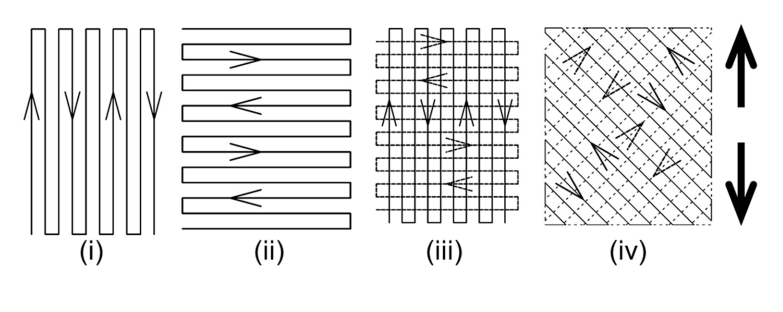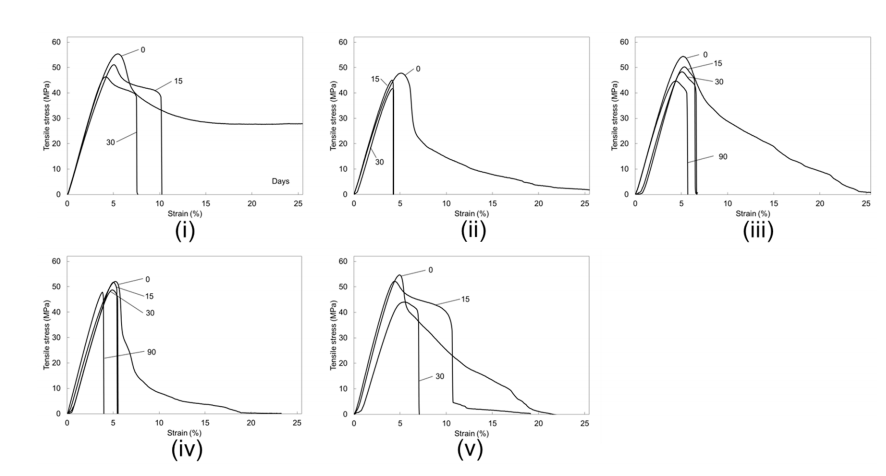 PLA is often the material of choice for users engaged in fused filament fabrication (FFF) 3D printing. Known for its environmentally-friendly features, the material is the most popular desktop 3D printing material worldwide. Recently, Japanese researchers from the Aichi Institute of Technology (AIT) put PLA to the test, outlining their results in their recently published paper, ‘Evaluation of the Deterioration of the Mechanical Properties of Poly(lactic acid) Structures Fabricated by a Fused Filament Fabrication 3D Printer.’
PLA is often the material of choice for users engaged in fused filament fabrication (FFF) 3D printing. Known for its environmentally-friendly features, the material is the most popular desktop 3D printing material worldwide. Recently, Japanese researchers from the Aichi Institute of Technology (AIT) put PLA to the test, outlining their results in their recently published paper, ‘Evaluation of the Deterioration of the Mechanical Properties of Poly(lactic acid) Structures Fabricated by a Fused Filament Fabrication 3D Printer.’
While PLA is expected to be strong, the authors experimented with varying print patterns (one could also use the terms infill patterns, print head path or toolpaths but the researchers use scan patterns as a term here) and how they can affect 3D printing—mainly examining the potential for deterioration in PLA. The research team assessed 3D printed structures after using four different scan patterns:
- Parallel
- Vertical
- Parallel-and-vertical
- Cross-hatched (at opposing diagonal angles to the tensile direction)
Strength in mechanical properties was then examined as they evaluated maximum stress, Young’s modulus, and breaking energy. A Lepton2 FFF 3D printer was used to create the test samples, with Simplify3D slicing and controlling software used in the design process. Some of the samples were produced via 3D printing, and some were made through traditional injection molding (IM) processes (fabricated by an ultra-compact desktop IM apparatus). After printing, the pieces were immersed in saline:
“After the test pieces formed by different nozzle scan patterns were immersed, they exhibited differences in the rates by which their maximum tensile stresses deteriorated and their masses increased through water uptake,” stated the researchers. “The influences of the scan patterns could be classified into two types: the unidirectional scan pattern influence and bidirectional scan pattern influence. The data obtained in this research will be applied to structural design when the FFF 3D printer is employed for the fabrication of structures with PLA filament.”

Photographs of the test pieces. Test pieces (i–iv) were fabricated by FFF using scan patterns (i) P., (ii) V., (iii) P.V., and (iv) C. Test piece (v) was fabricated by injection molding Bar 5 mm.
While the samples looked virtually identical at first, on close inspection, there were differences in the surfaces of each structure. Tensile stress was evaluated, and tensile stress of each piece was shown to increase with loading. The authors stated that each piece reached maximum stress at 5-6 percent strain; afterward, they decreased very suddenly or gradually. The test piece created by injection molding is of interest since it was created via a different technology. It was reported to withstand the largest average maximum tensile stress in comparison to the other samples, along with the largest average Young’s modulus. In testing the pieces after immersion for certain periods, however, the authors report that the average maximum stress dropped.

Scan patterns of the nozzle for test piece fabrication. (i) Parallel, P.; (ii) Vertical, V.; (iii) Parallel and Vertical, P.V.; (iv) Cross-hatched at opposing diagonal angles, C. The large arrow indicates the direction of the load in the tensile test.
They also were not able to assess the IM test pieces or those created with unidirectional scan patterns because they ‘unavoidably broke’ as they were being set into the tensile jigs for evaluation.
“In the immersion test, the maximum tensile strength deteriorated more rapidly in the test pieces fabricated by the unidirectional scan patterns than in the test pieces fabricated by the bidirectional scan patterns,” concluded the researchers. “While the test pieces fabricated by the unidirectional scan pattern absorbed water more slowly than the test pieces fabricated by the bidirectional scan patterns during the initial stage of immersion (15 days), the total amount of water they absorbed was larger after 30 days of immersion.
“These results indicate that the nozzle scan pattern affects both the strength characteristics of a structure and the rate of strength deterioration in relation to the rate of water uptake. The results obtained in this paper will be applied in design work using PLA with FFF 3D printers.”
The varied uses for PLA have been examined expansively over the past few years, especially due to its supposed biodegradability, and all-natural origins. It has been used to improve other 3D printing materials, make lightweight prototypes, and even in experimenting with materials for fabricating wound-healing meshes. What do you think of this news? Let us know your thoughts! Join the discussion of this and other 3D printing topics at 3DPrintBoard.com.

Representative changes of the stress–strain curves in the tensile test after immersion for certain periods. (i) P., (ii) V., (iii) P.V., (iv) C., and (v) I.M.
Subscribe to Our Email Newsletter
Stay up-to-date on all the latest news from the 3D printing industry and receive information and offers from third party vendors.
You May Also Like
Gorilla Sports GE’s First 3D Printed Titanium Cast
How do you help a gorilla with a broken arm? Sounds like the start of a bad joke a zookeeper might tell, but it’s an actual dilemma recently faced by...
Nylon 3D Printed Parts Made More Functional with Coatings & Colors
Parts 3D printed from polyamide (PA, Nylon) 12 using powder bed fusion (PBF) are a mainstay in the additive manufacturing (AM) industry. While post-finishing processes have improved the porosity of...
$25M to Back Sintavia’s Largest Expansion of Metal 3D Printing Capacity Since 2019
Sintavia, the digital manufacturing company specializing in mission-critical parts for strategic sectors, announced a $25 million investment to increase its production capacity, the largest expansion to its operations since 2019....
Velo3D Initiates Public Offering in a Bid to Strengthen Financial Foundations and Drive Future Growth
Velo3D (NYSE: VLD) has been among a number of publicly traded 3D printing firms that have attempted to weather the current macroeconomic climate. After posting a challenging financial report for 2023,...































